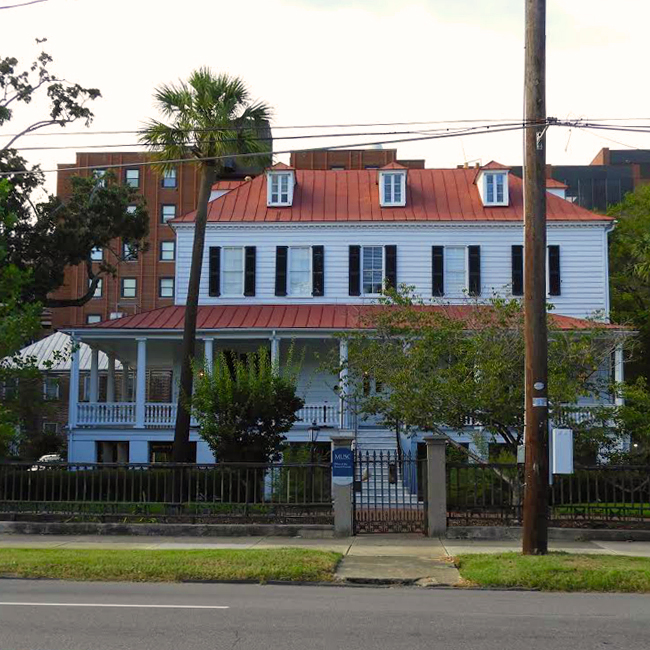
274 Calhoun Street
Several weeks ago we looked at the column ruins of 131 Rutledge Avenue, now known as Cannon Park and named after Daniel Cannon, an owner of saw mills near this area. In fact, the area was named “Cannonborough” after him.
Around the corner on Calhoun Street is 274 Calhoun Street, a two and one-half story cypress double house, built by Daniel Cannon for his daughter. He began construction in 1802; unfortunately, Cannon died not long after construction was started, and the house was finally completed in 1815.
Built in the Federal style and reminiscent of a plantation house, 274 Calhoun overlooked water which later became part of Calhoun Street when the surrounding marshlands were filled in.
From Calhoun Street you can see a brick dependency building that still exists behind the house. For a house this large there probably would have been other dependencies such as a kitchen, privies and stables or a carriage house.
274 Calhoun was purchased in 1838 by William Gregg, an entrepreneur who eventually founded Graniteville Manufacturing Company, known for textiles, in Aiken, S.C. Gregg owned the house until 1855 when he sold it to John Rutledge III, grandson of Governor John Rutledge who signed the Constitution. Under Rutledge’s ownership the property was updated with Greek Revival and later Victorian features.
In 1919 T. Bissell Anderson purchased 274 Calhoun Street for his large family, and the house remained in the Anderson family until 2002. Mr. and Mrs. Anderson lived at 274 Calhoun until their deaths and several of the daughters returned to the house until the last one, Katherine Anderson died in 2002. However, years before, the house was sold to the Medical University of South Carolina with a life tenancy clause; after Katherine died, the Medical University took over the property and made renovations to turn it into offices for the Medical University School of Pharmacy.
274 Calhoun is one of several antebellum houses scattered among the medical complex. As you can see, Charleston not only restores, renovates and rehabilitates her historic structures, she also recycles them – just more proof that Charleston does all she can to save her buildings. After all, that is the meaning of the City’s seal: “She Guards Her Buildings, Customs and Laws.”
Next week we explore more Charleston history through her structures.



